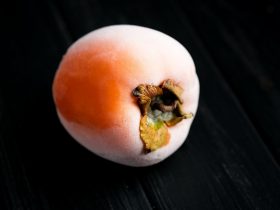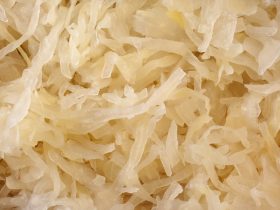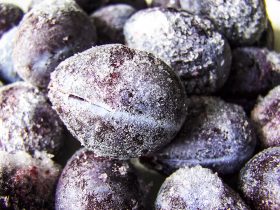Lobster is a seafood delicacy served both in fine dining establishments and in classic backyard cookouts, demonstrating the diversity of this particular crustacean dish. Served boiled or steamed within their shell, lobsters are often caught and cooked within the same day in order to maintain their edibility as much as possible.
Like most other forms of seafood, if lobster is left in improper conditions for too long, it may develop cultures of bacteria and fungi which produce potentially harmful compounds if eaten by humans. In order to avoid this, it is not uncommon to find fishermen and grocery stores freezing lobster to preserve it.
Lobster can and should be frozen as much as possible if not kept alive in a lobster tank or otherwise consumed immediately after cooking. Keep in mind that it is best to freeze lobster uncooked, as the damaging effects of freezing will alter the quality of your cooked lobster meat.
What Do You Need to Freeze Lobster?
Choosing to freeze lobster is somewhat easier than the process of harvesting and cooking it, owing to the fact that freezing lobster whole is entirely acceptable and in fact better than storing it in pieces.

However, this may be impractical depending on the size of your particular lobster. If needed, you may cut the lobster and discard the inedible portions of its body. Leave the lobster’s meat within its shell, as this will help protect it from the degrading effects of freezing temperatures.
All that is needed to freeze your lobster is aluminum foil, plastic cling wrap suitable for freezing, and a freezer capable of reaching temperatures at or below 32°F, also known as the crystallization point of water.
How to Freeze Lobster
As previously mentioned in this article, it is best to freeze lobster while it is still raw as cooked lobster meat does not hold up well to the rigors of freezing. Because of this, this particular section will focus mainly on freezing uncooked lobster still present in its shell.
First, thoroughly rinse your lobster under a running tap of cold water. This will ensure that no dirt or debris from the sea or market make its way into your freezer, potentially causing spoilage.
Once cleaned, dry the lobster with a dishcloth. Excess water present on the surface of the lobster will form ice crystals once placed in the freezer and may make the crustacean more difficult to defrost at a later time.
Using your roll of aluminum foil, wrap the lobster twice in alternating directions, crinkling the foil in areas that leave parts of the lobster shell exposed to the open air. The aluminum foil will act both as the first line of insulation against freezer burn as well as a container for the lobster’s own smells and moisture.
Now covered in aluminum foil, wrap the lobster once more, but this time with plastic cling wrap. Ensure that the cling wrap is not pierced by the spiny outcroppings of the lobster’s shell. It is advisable to wrap the lobster in multiple layers of plastic in order to cover all possible angles.
Wrapped in both plastic and aluminum foil, place the lobster in the deepest part of your freezer, far from any freezer vents or fans that will cause rapid deterioration of the lobster’s quality.
How to Thaw Lobster
Depending on the size of your particular frozen lobster, defrosting or otherwise thawing it may take up to twenty four hours.
As placing your lobster straight into a cooking pot or oven from the freezer will result in an uneven cook with raw meat at the center, it is best to follow this step in the lobster storing process in order to create a safer and more satisfying meal.
Remove the lobster from its place in the freezer and remove the first set of plastic layering, so only the aluminum foil is left covering the lobster.
Place the still-frozen lobster in the driest section of your refrigerator for up to twenty four hours, though it is likely only eight to nine hours is all that will be required.
This process may also be accelerated by soaking the lobster in a bowl of lukewarm or room temperature water, changing the water out every thirty minutes.
How Long Does Raw Lobster Last at Room Temperature?
According to an informational bulletin posted by the U.S. Department of health and human services, most forms of seafood should not remain at room temperature for any extended period of time owing to the nature of bacterial and fungal life2.
At its absolute maximum, raw lobster should only be left out and exposed to a room temperature environment for two hours. Any longer and the relative safety of the meat is called into question.
It is best to immediately cook your lobster once it has been removed from storage or harvested, as not only will microbiological life render the lobster harmful to eat but prolonged exposure to oxygen and direct light will degrade the quality of its taste and texture.
A good way to extend the shelf-life of your raw lobster in a room temperature environment is to leave it in a bowl of ice water, which should slow down its spoilage for a short time.
How Long Does Cooked Lobster Last?
Like most other forms of life, bacteria and fungi have a certain range of temperature that they may tolerate, with environments outside of this range being potentially harmful to their function or life.
In the case of cooking food, the high temperatures of processes like boiling or steaming can often kill the large majority of bacteria and fungi present in your food, with only a lucky few remaining to repopulate.
Even in the event that you have rendered the entirety of the microbiological life in your food inactive, even just removing the food from the stove will reintroduce new types of microbes to it. This is largely unavoidable outside of sterilized environments.
Cooked lobster can last for up to four days shelled and stored in the correct manner within a commercial refrigerator. Ensure that the fridge’s thermostat is set to 40°F or lower, as temperatures higher than this may not completely slow down microbiological colonization.
Can Lobster be Refrigerated?
For most types of organic food, the refrigerator’s steadily controlled temperature and variable humidity is an excellent way to extend their shelf-life to a point in time further than the food would reach at room temperatures.
This is especially true for lobster, which is highly susceptible to bacterial and fungal infestation. Even fully cooked, lobster will only last up to four days when moved to the refrigerator.
While doing so, ensure that the lobster has cooled off to room temperature so as to prevent the formation of steam and condensation within the lobster’s container and the refrigerator itself.
Once completely cooled off from the stove, wrap the lobster in aluminum foil and place in an air-tight container. If you have made a stew with the lobster or have otherwise cooked it alongside other ingredients, it is best to store them separate from the lobster as it may spoil prematurely by proximity.
Lobster meat that has been removed from its shell has been found to have a slightly longer shelf-life than that of lobster meat still encased in its shell. It is best to crack the lobster’s shell and to remove the meat prior to refrigerating if possible.
References
1. Johnson, Paul (2007). “Lobster”. Fish Forever: The Definitive Guide to Understanding, Selecting, and Preparing Healthy, Delicious, and Environmentally Sustainable Seafood. John Wiley & Sons.
2. Unknown Author. (September 2021) “Cold Food Storage Chart” U.S. Department of Health and Human Services. Foodsafety.gov
3. “So Easy to Preserve”, 6th ed. 2014. Bulletin 989, Cooperative Extension Service, The University of Georgia, Athens. Revised by Elizabeth L. Andress. Ph.D. and Judy A. Harrison, Ph.D., Extension Foods Specialists.





Hi, I'm Dom
Dom Eats was started to help other people fall in love with food. While cooking can feel intimidating, it doesn't have to be.